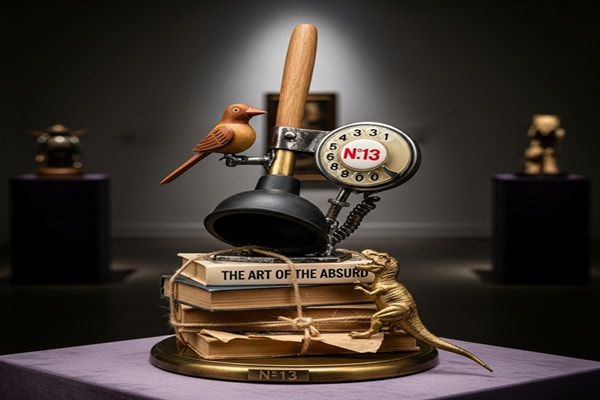
When it comes to beauty, the world is finally starting to realize something Africa has known for centuries: there is no one-size-fits-all standard. Curves, shapes, and proportions come in many forms, and each tells a unique story of culture, history, and identity.
That’s where the Unusual Award N.13: Extreme Gluteal Proportions in African Women comes in—a celebration that’s sparking conversation across continents. At first glance, the award might seem unusual (hence the name), but when you look deeper, it’s a fascinating recognition of natural diversity, cultural pride, and the shifting landscape of global beauty standards.
Let’s break it down together.
Why Extreme Gluteal Proportions Matter in African Culture
In many African traditions, fuller figures—especially larger buttocks—have long been admired. They’re often seen as symbols of:
-
Fertility – representing the ability to nurture and give life.
-
Health and strength – reflecting prosperity and vitality.
-
Cultural pride – deeply rooted in art, folklore, and community values.
A striking example is steatopygia, a genetic trait most notably found among the Khoisan people of Southern Africa. It leads to fat being stored in the gluteal region, creating distinctive body shapes. Far from being stigmatized, this was—and still is—considered a mark of beauty and resilience in many communities.
Across African sculptures, paintings, and oral traditions, women with pronounced curves have been celebrated as icons of femininity and power.
The Science Behind the Shape
It’s not just cultural—it’s biological, too. Here’s what science tells us about extreme gluteal proportions:
-
Genetic Adaptation: Certain genetic markers encourage fat storage in the buttocks, which was historically useful in harsh environments as a form of energy reserve.
-
Health Benefits: Unlike visceral fat (around the organs), subcutaneous fat in the buttocks is less harmful and may even lower risks of conditions like type 2 diabetes and heart disease.
-
Evolutionary Advantage: Wide hips and fuller buttocks have historically been linked to fertility and childbearing, influencing human attraction and mate selection.
So what might look like just a physical trait actually carries deep biological, cultural, and evolutionary importance.
What Makes the Unusual Award N.13 So Unique?
Unlike mainstream beauty pageants that often reward narrow, Eurocentric ideals, this award flips the script. It’s about celebrating natural diversity and empowering women to embrace who they are.
-
Purpose: To honor women with naturally fuller proportions while shining a light on cultural heritage.
-
Selection: Recognition is based not only on appearance but also on confidence, cultural pride, and individuality.
-
Impact: It adds momentum to the body positivity movement, showing the world that beauty cannot—and should not—be standardized.
In short, it’s not about creating a spectacle. It’s about reclaiming and revaluing traits that were once dismissed in global beauty conversations.
Modern Representation: From Local to Global
With social media and pop culture, the appreciation of curves has spread worldwide. African ideals are influencing everything from fashion to music videos.
-
Celebrities & Influencers: Think Beyoncé, Rihanna, and even Kim Kardashian—women whose figures have redefined beauty in global media. But here’s the catch: while this visibility helps normalize curves, it also raises debates about cultural appropriation when traits natural to African women are commodified elsewhere.
-
Fashion & Media: Brands are finally waking up. Campaigns are now featuring plus-size models, diverse body types, and curvier silhouettes. It’s not just a marketing trend—it’s a reflection of how consumer expectations around inclusivity have changed.
-
The Health vs. Aesthetic Debate: While natural curves are celebrated, the rise of cosmetic surgery (like BBLs) has stirred concerns. Are we pushing dangerous beauty standards instead of truly embracing diversity?
The Controversy: Empowerment or Objectification?
Like any bold recognition, this award comes with its share of criticism.
-
The Empowerment Side: Supporters see it as a win against Eurocentric ideals. For many African women, it’s validation of traits that mainstream beauty once ignored or mocked.
-
The Objectification Concern: Critics argue that focusing on body parts risks reducing women to their physical features. They say true empowerment should celebrate talents, intelligence, and holistic identity—not just appearance.
-
Cultural Sensitivity: Some wonder if this “award” format risks sensationalizing what should be respected as part of African heritage.
And honestly? Both sides have a point. The key is balance—celebrating without exploiting, honoring without stereotyping.
Also Read : Hura-Watch.net Quest of the Eternal Realm: Your Gateway to a Legendary Fantasy Adventure
What This Means for the Future of Beauty
So, where do we go from here? The Unusual Award N.13 is more than just a title—it’s a symbol of change.
Here’s what it could inspire:
-
A Broader Body Positivity Movement: Encouraging people everywhere to love their natural shapes, whether curvy, slim, or in-between.
-
Authentic Representation: Media and fashion industries showcasing diversity without tokenism.
-
Shifting Global Standards: The more we embrace body diversity, the less influence narrow beauty ideals will have over confidence and identity.
7 Key Takeaways from the Unusual Award N.13
-
Beauty is cultural – What’s celebrated in one culture might be overlooked in another.
-
Genetics matter – Body diversity is natural and deeply human.
-
Representation is power – Seeing yourself reflected in media shapes confidence.
-
Body positivity is global – It’s not just a Western trend; it has roots worldwide.
-
Awards can spark change – Recognition helps shift conversations around beauty.
-
Criticism is healthy – Debates push us to rethink how we define and celebrate beauty.
-
Diversity wins – The future of beauty is inclusive, not exclusive.
Conclusion: More Than Just an Award
At first glance, the Unusual Award N.13: Extreme Gluteal Proportions in African Women might sound quirky or even controversial. But dig deeper, and it becomes clear: it’s a conversation starter. It challenges outdated norms, amplifies cultural pride, and reminds us that beauty is—and always has been—diverse.
Whether you see it as empowerment, controversy, or something in between, one thing is certain: the award has sparked a global dialogue about representation, self-love, and cultural appreciation. And maybe that’s the real prize—reminding us all that true beauty is about embracing who we are, unapologetically.


